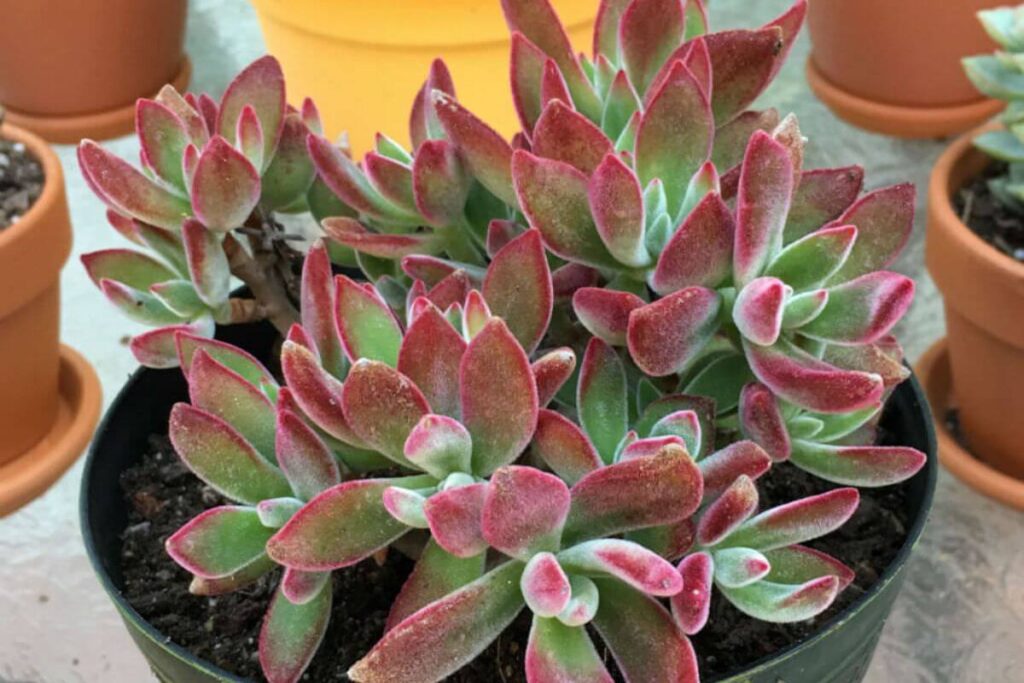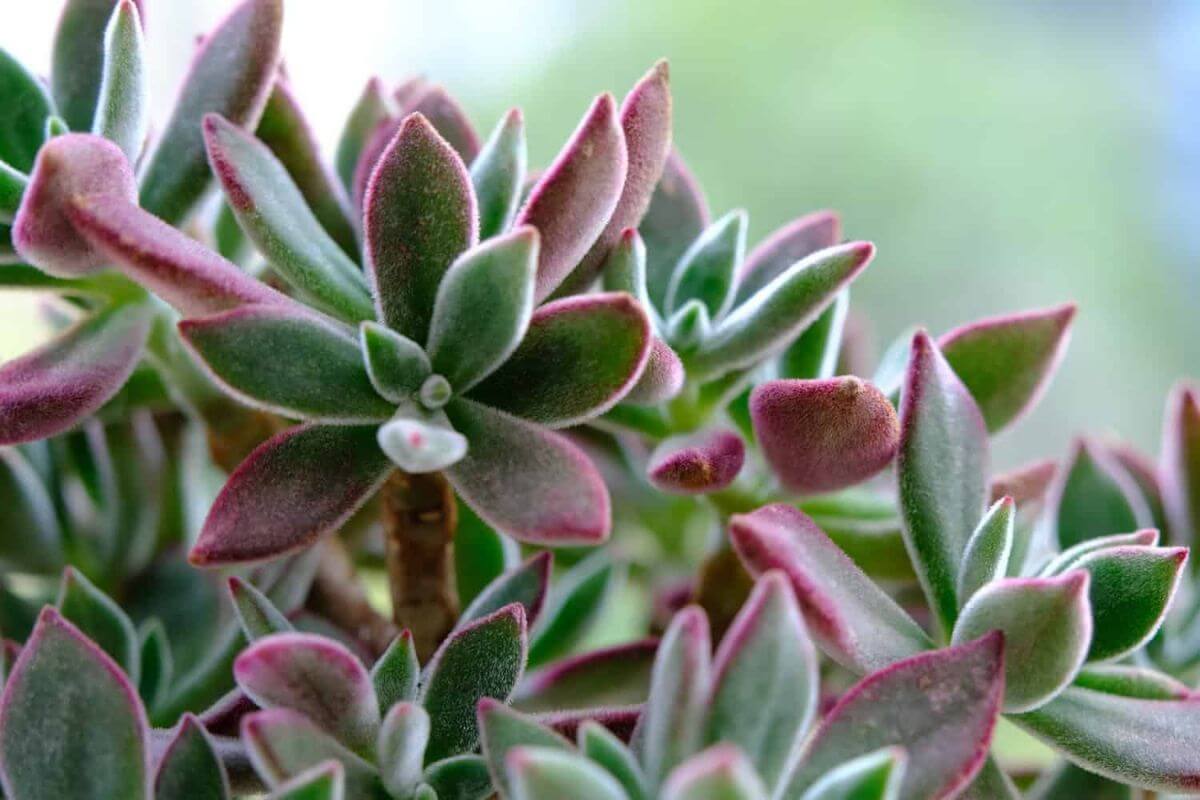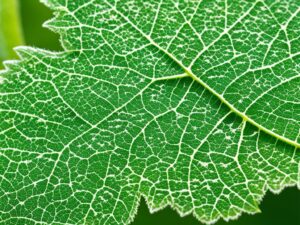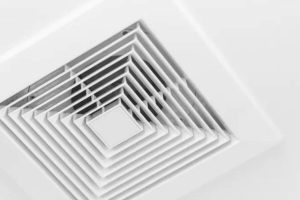Introduction
Echeveria plants are beloved among succulent enthusiasts for their unique characteristics and stunning beauty. Two popular species, Echeveria Harmsii and Echeveria Pulvinata, often find their way into gardens and homes. In this comprehensive guide, we will explore the similarities and differences between Echeveria Harmsii and Echeveria Pulvinata, helping you make an informed choice when adding these captivating succulents to your collection.
Appearance
Echeveria Harmsii
Echeveria Harmsii, commonly known as “Red Velvet” due to its plush, velvety leaves, boasts a rosette shape. Its leaves are a striking shade of green with subtle red accents, creating a visually appealing contrast. The rosette grows up to 6 inches in diameter, making it a compact and charming addition to any garden.

Echeveria Pulvinata
Echeveria Pulvinata, on the other hand, is known as the “Chenille Plant” for its distinctive appearance. Its leaves are covered in fine white hairs, giving them a fuzzy, almost fuzzy-wuzzy appearance. This species forms rosettes as well, but they tend to be larger, reaching up to 12 inches in diameter.
Growth Habits
Echeveria Harmsii
Echeveria Harmsii is a slow grower, which can be an advantage for those seeking a low-maintenance succulent. It prefers partial to full sunlight and well-draining soil. This species is well-suited for containers, rock gardens, or as a ground cover in dry climates.
Echeveria Pulvinata
Echeveria Pulvinata grows at a moderate pace and thrives in bright, indirect sunlight. This species is also adaptable to various soil types but requires good drainage. Gardeners often choose Echeveria Pulvinata for its impressive size and unique texture.
Flowering
Echeveria Harmsii
Echeveria Harmsii produces bright orange or red bell-shaped flowers in the spring and summer months. These vibrant blooms stand out against the green foliage, adding to the plant’s allure.
Echeveria Pulvinata
Echeveria Pulvinata also blooms during the spring and summer, but its flowers are typically yellow or orange. These flowers, often tinged with red, create a stunning contrast against the white, fuzzy leaves.
Maintenance
Echeveria Harmsii
As a low-maintenance succulent, Echeveria Harmsii is relatively easy to care for. Water it sparingly, allowing the soil to dry out between watering sessions. In colder climates, protect it from frost to maintain its health and vibrancy.
Echeveria Pulvinata
Echeveria Pulvinata requires similar care, including infrequent watering. However, its larger size means it may need more space to thrive. Be cautious of overwatering, as it can lead to root rot.
Popularity Among Succulent Enthusiasts
Echeveria Harmsii and Echeveria Pulvinata both have dedicated fan bases. The choice between the two often comes down to personal preference. Harmsii’s compact size and striking red accents make it a favorite among collectors, while Pulvinata’s unique texture and larger rosettes appeal to those looking for a statement piece in their garden.
Conclusion
In the world of succulents, Echeveria Harmsii and Echeveria Pulvinata stand out as remarkable choices. Whether you prefer the plush, compact beauty of Harmsii or the fuzzy, impressive rosettes of Pulvinata, both species are sure to enhance your collection. Ensure you provide them with the proper care and watch these captivating succulents thrive in your garden or home.
FAQs
1. Can I grow Echeveria Harmsii and Echeveria Pulvinata together?
While they have similar care requirements, it’s advisable to plant them separately to appreciate their individual beauty.
2. How often should I water Echeveria Pulvinata?
Water sparingly, allowing the soil to dry out completely between waterings.
3. Do Echeveria Harmsii and Echeveria Pulvinata attract pests?
They are generally resilient, but keep an eye out for common succulent pests like mealybugs and aphids.
4. Can I propagate these succulents from leaf cuttings?
Yes, both species can be propagated from leaf cuttings, making it an excellent way to expand your collection.
5. What is the ideal temperature range for Echeveria Harmsii and Echeveria Pulvinata?
They thrive in temperatures between 60°F to 80°F (15°C to 27°C), but they can tolerate slightly lower or higher temperatures for short periods with proper care.
In this article, we’ve explored the differences and similarities between Echeveria Harmsii and Echeveria Pulvinata, helping you make an informed choice when adding these captivating succulents to your collection. Whether you prefer the plush, compact beauty of Harmsii or the fuzzy, impressive rosettes of Pulvinata, both species are sure to enhance your garden or home. Happy gardening!



